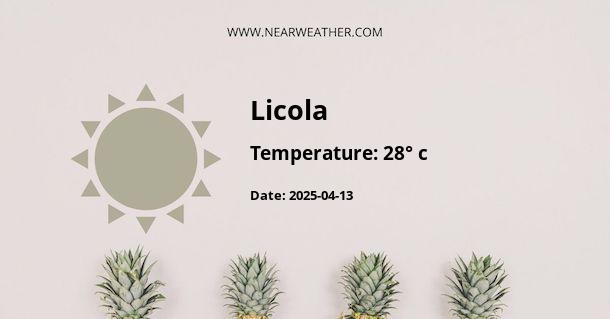Licola, Australia: Climate and Weather Year Round
Licola is a small town located in Victoria, Australia. Situated in the heart of the Australian Alps, Licola offers a unique climate and weather experience throughout the year. Let's dive into the details of Licola's climate patterns, temperatures, precipitation, and other important weather factors.
Climate Classification
Licola falls under the classification of a temperate climate, specifically a cool-temperate climate. The town experiences distinct seasons with relatively mild summers and cool winters. The surrounding mountainous region also influences the local climate, creating specific weather patterns.
Temperature Range
Throughout the year, Licola experiences a wide temperature range due to its location in the Australian Alps. Summers are generally mild, with average daytime temperatures ranging from 20 to 25 degrees Celsius (68 to 77 degrees Fahrenheit). In contrast, winters can be chilly, with average daytime temperatures ranging from 5 to 12 degrees Celsius (41 to 54 degrees Fahrenheit).
It is important to note that Licola is subject to rapid weather changes, especially during the transition seasons of spring and autumn. These seasons can bring sudden drops or increases in temperatures, so visitors should be prepared for varying weather conditions.
Precipitation and Rainfall
Licola receives a significant amount of precipitation throughout the year. The town experiences an average annual rainfall of around 1000 millimeters (39 inches). The wettest months are typically during the spring and autumn seasons, with November being the wettest month of the year.
The surrounding mountainous region contributes to Licola's rainfall patterns, with the mountains acting as a barrier to the prevailing winds. As a result, Licola experiences orographic rainfall, where moist air is forced to rise over the mountains, leading to increased precipitation on the windward side.
Snowfall
Due to its location in the Australian Alps, Licola experiences snowfall during the winter months. Snow is a common occurrence in Licola, especially in June, July, and August. The snow-capped mountains create a picturesque winter landscape, attracting visitors who enjoy winter sports and activities.
Sunshine Hours
Licola enjoys a moderate amount of sunshine throughout the year. On average, the town experiences around 2000 to 2200 hours of sunshine annually. The sunniest months are typically during the summer season, with January and February having the highest number of sunshine hours.
Extreme Weather Events
While Licola generally experiences mild weather conditions, it is not immune to extreme weather events. Bushfires can be a concern during the hot and dry summer months, particularly in areas surrounding the town. Visitors should be aware of any fire warnings and follow the instructions of local authorities.
In addition, Licola can occasionally experience severe storms, including thunderstorms, heavy rainfall, and strong winds. These storms are more likely to occur during the transition seasons of spring and autumn. It is advisable to stay informed about weather forecasts and take necessary precautions during such events.
Conclusion
Licola, Australia offers a diverse climate and weather experience throughout the year. From mild summers to chilly winters, and from plentiful rainfall to snowy winters, Licola's unique location in the Australian Alps creates a distinctive climate pattern. Visitors can enjoy the natural beauty of the surrounding mountains and engage in various outdoor activities that each season offers.
Whether you're a nature enthusiast, a winter sports enthusiast, or simply looking to explore the stunning landscapes, Licola's climate and weather year-round provide an enticing destination for all.
A - Licola's Latitude is -37.633331 & Longitude is 146.616669.
A - Weather in Licola is 28° today.
A - Climate Conditions in Licola shows clear sky today.
A - Humidity in Licola is 30% today.
A - Wind speed in Licola is 10.04 km/h, flowing at 296° wind direction. today.
